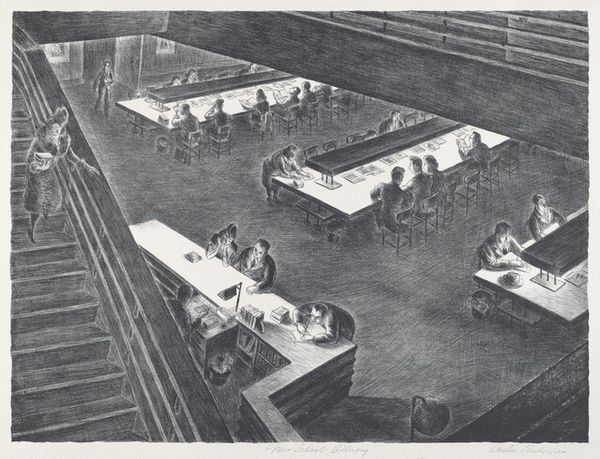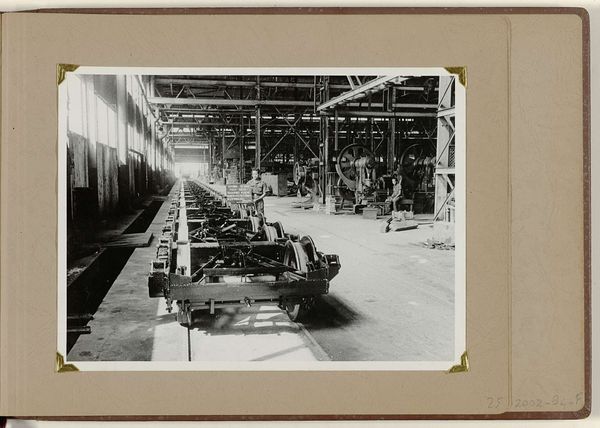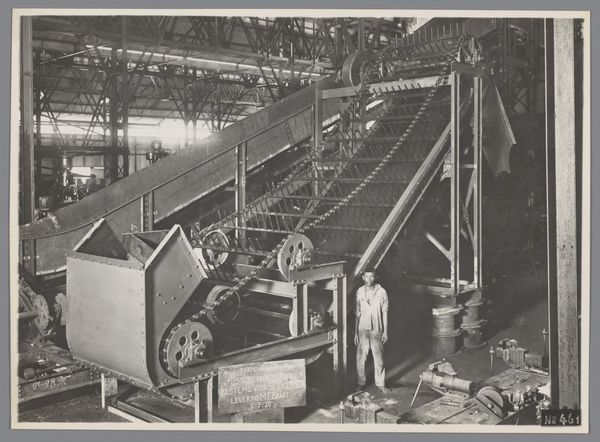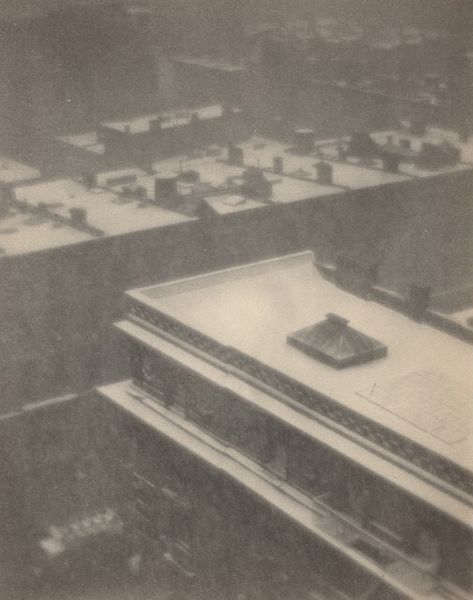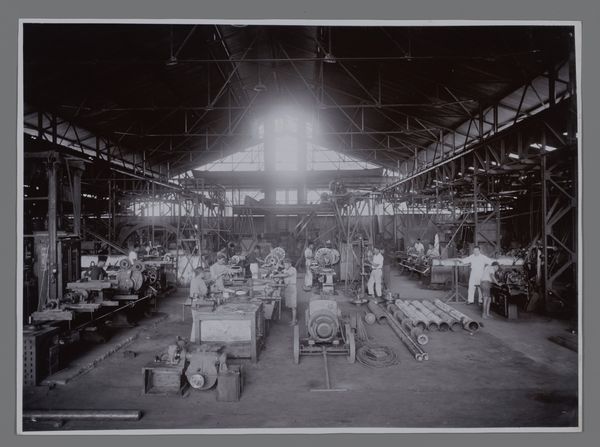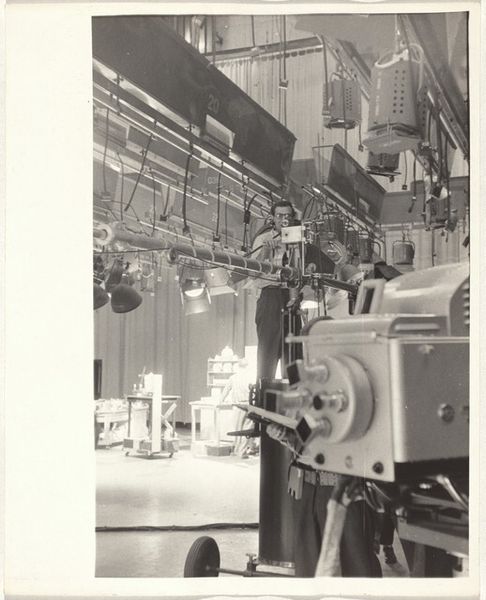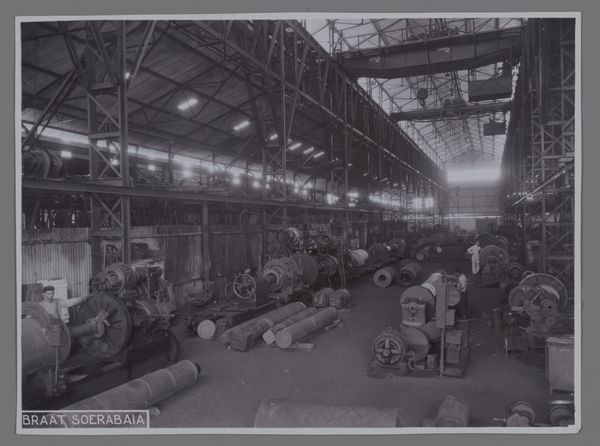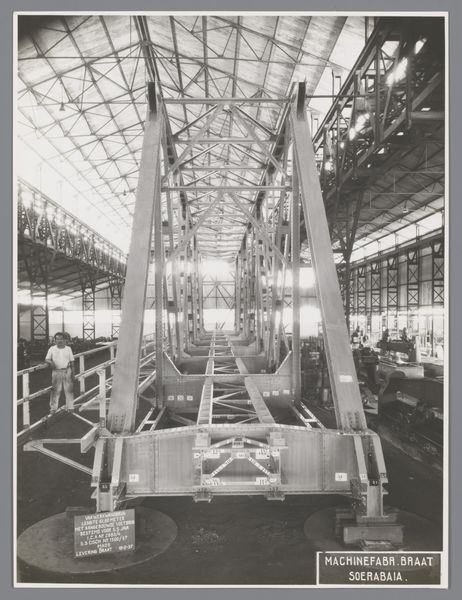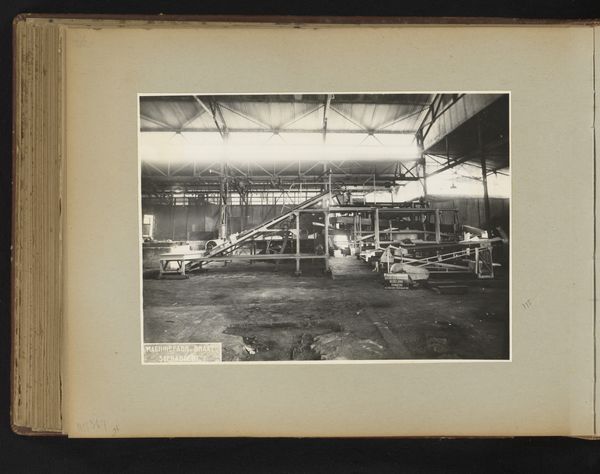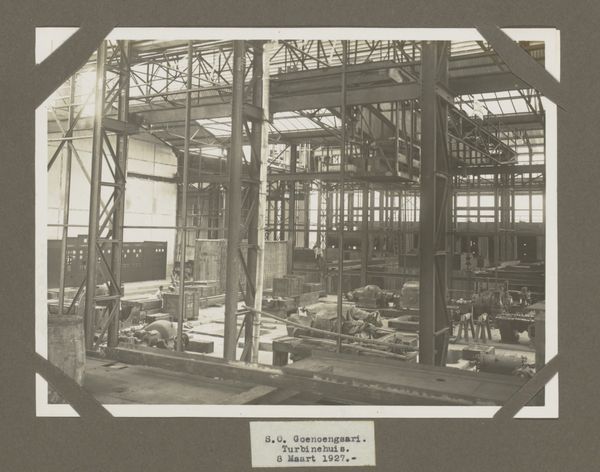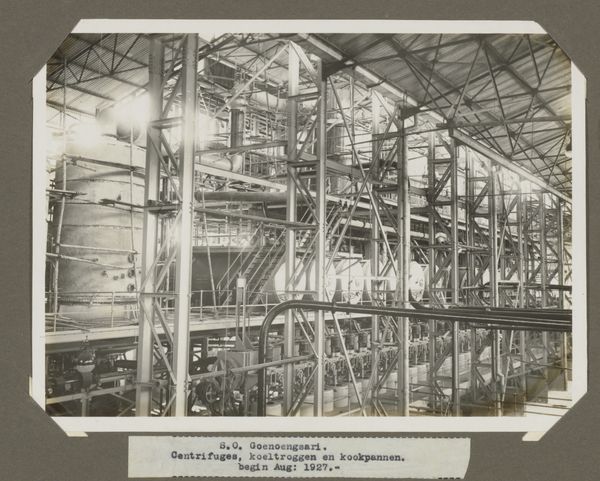
drawing, print, pencil
#
drawing
# print
#
pen illustration
#
pencil sketch
#
geometric
#
pencil
#
cityscape
#
genre-painting
#
pencil art
#
modernism
#
realism
Dimensions: Image: 292 x 312 mm
Copyright: National Gallery of Art: CC0 1.0
Editor: We're looking at William Wolfson's "Auto Factory," created in 1944. It appears to be a print, maybe a lithograph or some kind of drawing. The way the scene recedes into the background is incredible. What do you see in this piece in terms of composition? Curator: I'm struck by the strong diagonal lines that dominate the composition, creating a powerful sense of depth and perspective. Notice how Wolfson uses these lines, emanating from the lower left, to guide the eye through the ordered chaos of the factory floor. The repetition of geometric forms—the cars, the machinery, even the workers' stances—introduces a visual rhythm. How does this geometry impact the overall feeling of the piece, do you think? Editor: It almost makes the workers seem like part of the machine, but I find a certain beauty in its functional elegance. The crisp lines of the cars and equipment evoke the clean lines of modernist architecture. Curator: Precisely. Note the contrast between the sharp lines defining the machinery and the softer shading used to render the human figures. This suggests a hierarchy, where the technological apparatus takes precedence. Consider, too, the spatial relationships: the factory floor stretches out, seemingly infinite. Editor: That almost sterile feeling juxtaposed with the figures. There is not a focal point so the viewer sees all the factory activity at once. Do you see any interplay between the form and content of this image? Curator: Certainly. The meticulously rendered forms communicate a sense of order, control, and, perhaps, the relentless march of industrial progress. There's a definite aesthetic being proposed here. How would you describe that aesthetic and the meaning created by that design? Editor: It creates a sort of mechanized vision with great use of lines and shapes to create depth, and it also reveals that man and machines are both responsible in building industry. It is almost optimistic despite the repetition and starkness. Thank you, this close look has brought up many interesting angles about mass production. Curator: It's the synthesis of line, form, and spatial arrangement that allows Wolfson to transcend a mere representation of a factory and offer a meditation on the very nature of industrial production. A satisfyingly self-contained world created from geometric interplay.
Comments
No comments
Be the first to comment and join the conversation on the ultimate creative platform.
